Enjoy Lobstermania 2 Slot By Igt Free
8 Maggio 2023Ways to Compare Electronic Data Bedroom Pricing
9 Maggio 2023Image detection, recognition and image classification with machine learning by Renukasoni AITS Journal
It became more popular due to its homogenous strategy, simplicity, and increased depth. The principle impediment related to VGG was the utilization of 138 million parameters. This make it computationally costly and hard to use on low-asset frameworks (Khan, Sohail, Zahoora, & Qureshi, 2020). The major steps in image recognition process are gather and organize data, build a predictive model and use it to recognize images. As we’ve shown, we can use the power of our AI engine to automatically add relevant keywords to products. These highly accurate keywords improve product discoverability within our store.
G7 Nations Will Announce an ‘AI Code of Conduct’ for Companies … – Slashdot
G7 Nations Will Announce an ‘AI Code of Conduct’ for Companies ….
Posted: Sun, 29 Oct 2023 23:25:02 GMT [source]
Define tasks to predict categories or tags, upload data to the system and click a button. The first and second lines of code above imports the ImageAI’s CustomImageClassification class for predicting and recognizing images with trained models and the python os class. In the seventh line, we set the path of the JSON file we copied to the folder in the seventh line and loaded the model in the eightieth line.
Applications of image recognition in the world today
However, this is only possible if it has been trained with enough data to correctly label new images on its own. In the first step of AI image recognition, a large number of characteristics (called features) are extracted from an image. An image consists of pixels that are each assigned a number or a set that describes its color depth.
Image recognition algorithms compare three-dimensional models and appearances from various perspectives using edge detection. They’re frequently trained using guided machine learning on millions of labeled images. This concept of a model learning the specific features of the training data and possibly neglecting the general features, which we would have preferred for it to learn is called overfitting.
Sonar data?—?Mines vs Rocks?—?on cAInvas
While both fall under the umbrella of computer vision, they serve different purposes. Ever marveled at how Facebook’s AI can recognize and tag your face in any photo? Well, that’s the magic of AI for image recognition, and it’s transforming the marketing world right here in Miami. Outsourcing is a great way to get such jobs done by dedicated experts at a lower cost. Companies involved in data annotation do this job better helping AI companies save their cost of training an in-house labeling team and money spend on other resources. Similarly to recognize a certain pattern in a picture image recognition is used.
Image Recognition gives computers the ability to identify objects, people, places, and texts in any image. Another significant innovation is the integration of reinforcement learning techniques in image recognition. By starting with a pre-trained model trained on a large dataset, transfer learning enables developers to overcome the challenge of limited data. Instead of training a model from scratch, the pre-trained model is fine-tuned on a smaller dataset specific to the new task. This approach helps in achieving better performance and reduced training time. Image recognition algorithms are the driving force behind this technology.
Training Process of Image Recognition Models
Experience has shown that the human eye is not infallible and external factors such as fatigue can have an impact on the results. These factors, combined with the ever-increasing cost of labour, have made computer vision systems readily available in this sector. To overcome these obstacles and allow machines to make better decisions, Li decided to build an improved dataset. Just three years later, Imagenet consisted of more than 3 million images, all carefully labelled and segmented into more than 5,000 categories. This was just the beginning and grew into a huge boost for the entire image & object recognition world. Whether you’re manufacturing fidget toys or selling vintage clothing, image classification software can help you improve the accuracy and efficiency of your processes.
Read more about https://www.metadialog.com/ here.
